The Passage Culture of Istanbul: Exploring Beyoglu’s Historic Arcades
Passages, which once housed the most popular shops and famous cinemas and theatres of the era, are architectural structures described as ‘a small world unto themselves.’ As German thinker Walter Benjamin put it, these passages are not merely shopping venues but also social and cultural meeting points. Despite the city's growth and transformation over time, passages continue to exist within the fabric of Beyoglu; though no longer as popular as before, the traces of these historical structures persist in daily life.
Passages, which were the subject of various debates due to their architectural styles when they first appeared, were not only places of trade but also places of cultural exchange. Many small and large tradesmen operated in these passages. So, what are the important passages in Beyoglu?
(Cover Source: Wowturkey.com)
Rumeli Pasajı
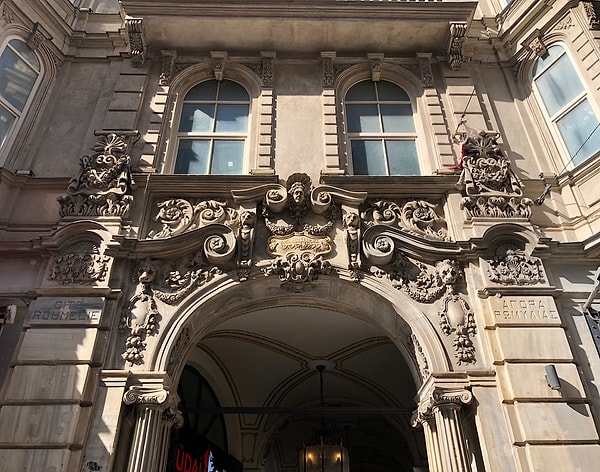
Rumeli Pasajı was designed by German architect Jachmund, who also designed Sirkeci Station, and was built in the 1890s. The building, which was the tallest structure on Cadde-i Kebir (today's İstiklal Street) at the time, is the most magnificent of the three passages built by Sarıca Ragıp Paşa. This magnificent nine-storey building contains 58 apartments, 30 shops, and two additional doors opening onto Nane Sokak and Maliyeci Sokak, in addition to its main door opening onto İstiklal Caddesi.
In the past, this building housed pastry shops, jewellers, tailors and clinics, but it became particularly popular among stamp collectors in the 1960s. In addition, the famous Hacı Abdullah Restaurant, which has become one of the symbols of Beyoglu, first opened here.
Source: kültür envanteri
Anadolu Pasajı
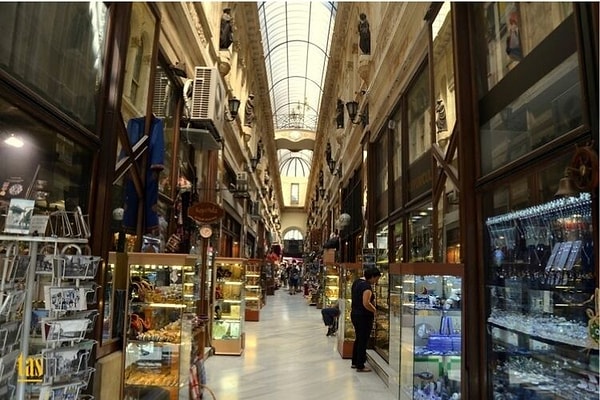
Another passage added to Beyoglu by Sarıca Ragıp Paşa, the Anadolu Pasajı looks like an ordinary apartment building from the outside, but once you enter, you are greeted by a spacious and impressive structure. Compared to other passages in terms of grandeur, this building is simpler, but it has undergone renovations over time and now has a different appearance.
One of the most famous places in the Anadolu Pasajı is the restaurant that used to be a famous Greek tavern called ‘Brasserie de l'Orient’ and later served as Hacı Salih Restaurant for many years. This restaurant, which is one of the important representatives of Ottoman cuisine, has blended in with the historical atmosphere of the passage.
Source: Turanakinci
Atlas Pasajı
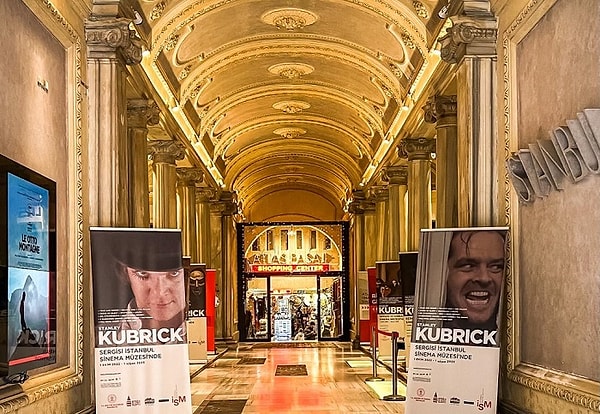
Built in 1877 by Armenian banker Agop Köçeyan as a winter residence after the great Beyoglu fire of 1870, Atlas Pasajı is one of the structures that reflect the splendour of the period. The lower floors of the building were used as stables for horses and carriages in the early days.
Following renovations and alterations in 1948, the Küçük Sahne theatre was established under the leadership of theatre director Muhsin Ertuğrul, and the Kulis Bar and Atlas Cinema, one of the largest cinemas of the period, opened here. This structure, which became a centre for entertainment and art, was purchased by Cevher Özden in the 1970s, but remained unused for a long time after Özden's bankruptcy. The building, which was transferred to the Treasury in 1985, was purchased by Türker İnanoğlu in 1989.
Today, there are 44 shops in the passage, and the historic Atlas Cinema is still in operation. The cinema's capacity has been increased through structural renovations. The Sadri Alışık Cultural Centre operates in the Small Stage. Unfortunately, the legendary Kulis Bar of that era has closed.
Source: Turizm Günlüğü
Çiçek Pasajı
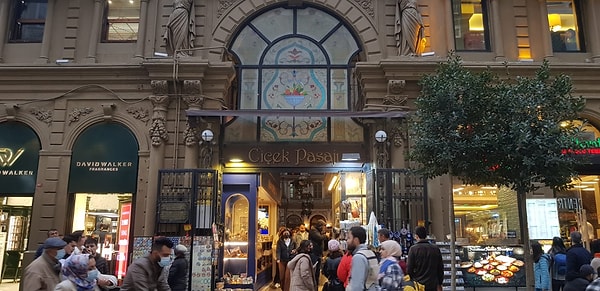
Çiçek Pasajı, one of the first buildings that comes to mind when mentioning İstiklal Caddesi, has a long history. Before the current building, Hristaki Pasajı (Cité de Péra) was located here. This passage was built by Hristaki Zogfaros from the Zogfaros family. The Zogfaros family, one of the wealthiest Greek families in Istanbul, amassed a great fortune by supplying meat and milk to the palace, and in addition to this passage, they also built the Zografyon Greek High School.
After the 1870 Beyoglu fire destroyed the old building, the current building was constructed in 1875 by architect Cleanthe Zanno. Initially consisting of 18 apartments and 24 shops, this quiet building transformed in the 1930s when the Zografos family was exiled for political reasons; the shops were gradually filled with florists. This is why it was named ‘Çiçek Pasajı’ (Flower Passage).
From the 1940s onwards, the flower shops were replaced by taverns and pubs. The building underwent extensive restoration in 1988 and continues to be one of the symbols of Istiklal today.
Source: Istanbul'un Sırları
Avrupa Pasajı
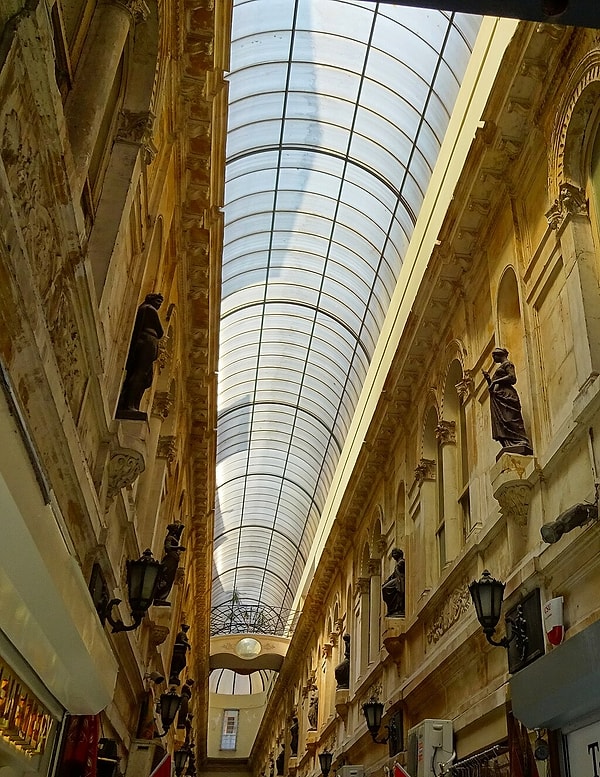
It is said that Avrupa Pasajı is similar to the arcades on Burlington Arcade in London or Haussmann Boulevard in Paris. Built in 1874 by the Ohing Family to the architect Pulgher, this building was also home to a circus and the famous Naum Theatre before the 1870 Pera fire.
There are 22 shops in the 56-metre-long arcade. In particular, the most famous drapers and button makers of the period were located here. Today, various shops still operate in Avrupa Pasajı. There is also a hall called Aynalı Geçit, which is used for events.
Right next to the passage is Aslıhan Pasajı. This passage is famous for its bookshops and is a favourite haunt of book enthusiasts. This forger's passage, where rare works can be found, stands out as an important part of Beyoglu's cultural heritage.
Suriye Pasajı

One of Beyoglu's most striking buildings, Suriye Pasajı, was built in 1908 and is an elegant example of Levantine architecture of the period. The passage was commissioned by Syrian Christian merchants living in Istanbul during the Ottoman Empire who were engaged in trade. It takes its name from this community. Reflecting the European influence of the period in its architecture, the passage has been one of the important cultural and commercial centres on Istiklal Avenue.
The neo-classical building stands out with its high ceilings, spacious entrance hall, mosaic floors and elegant columns. The structure, which has two main doors, serves as a passageway between Istiklal Street and Meşrutiyet Street. In its early days, the passage housed antique shops, stylish boutiques, stationery stores, and art galleries. At the same time, its upper floors were used as residences and offices.
Suriye Pasajı has hosted many artistic and cultural events over the years. Especially since the 1990s, alternative art galleries, small publishing houses, and boutique shops have begun to revive here. Today, it continues to be one of Beyoglu's unique passages, both as an architectural structure that preserves its historical texture and as a place with shops operating in various fields.
One of the passage's key features is its quiet and introspective atmosphere, which sets it apart from others. It serves as a hidden sanctuary for those seeking a moment of respite from the noisy crowds. For those wishing to experience Istanbul's historical layers and blend the past with the present, the Suriye Pasajı is an essential stop.
Keşfet ile ziyaret ettiğin tüm kategorileri tek akışta gör!

Send Comment